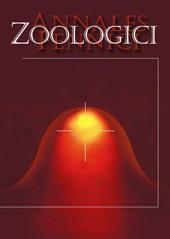We report the first investigation of nuclear genetic variability in the colony of the spotted seal (Phoca largha) in the Liaodong Gulf, China, where the estimated population size was under 1000 individuals during the study period (2005–2008). A total of 29 microsatellite loci from five pinniped species were employed in 176 spotted seals. Only 15 were polymorphic, with a maximum of 4 alleles detected in samples, with the mean number of alleles per locus being 2.73. Estimates of expected heterozygosity He for the polymorphic loci ranged from 0.24 (± 0.05 SD) to 0.72 (± 0.02 SD), with a mean He per polymorphic locus of 0.51 (± 0.05 SD). No deviation from the Hardy-Weinberg equilibrium was detected for any of the loci. No differences were detected for either genic or genotypic frequencies of seals from the different sampling sites and years. Several statistical methods were applied to detect the population reduction and compare it with that in other seal species. The result indicated that the population of the Liaodong Gulf spotted seal has suffered a decrease in genetic variability and population reduction over the last several decades. The present study supports a notion that a decrease in population size is the main factor accounting for the low levels of variability observed. These research results provide useful data for the conservation and management of the Liaodong Gulf colony.
BioOne.org will be down briefly for maintenance on 17 December 2024 between 18:00-22:00 Pacific Time US. We apologize for any inconvenience.
How to translate text using browser tools
1 March 2010
Low Microsatellite Variation in Spotted Seal (Phoca largha) Shows a Decrease in Population Size in the Liaodong Gulf Colony
Jia-Bo Han,
Fan-Yue Sun,
Xiang-Gang Gao,
Chong-Bo He,
Pi-Lie Wang,
Zhi-Qiang Ma,
Zhao-Hui Wang
ACCESS THE FULL ARTICLE

Annales Zoologici Fennici
Vol. 47 • No. 1
March 2010
Vol. 47 • No. 1
March 2010




